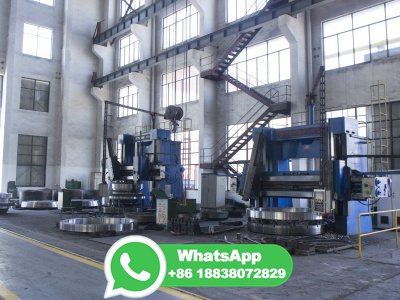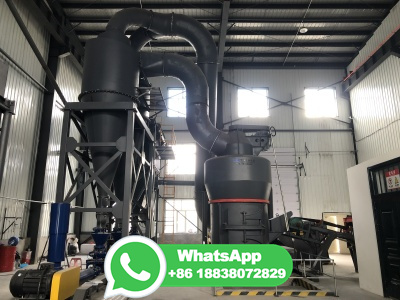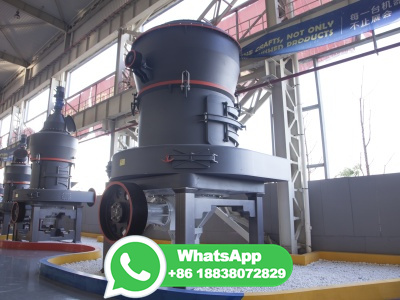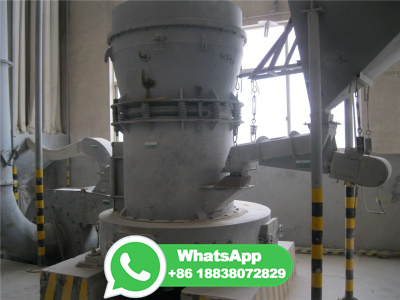
Magnetite. Magnetite is an oxide mineral with structural formula [Fe2+ (Fe3+)2O4] having the spinel structure. Other minerals in the series include magnesioferrite [Mg2+ (Fe3+)2O4], franklinite [Zn2+ (Fe3+)2O4] and jacobsite [Mn2+ (Fe3+)2O4]. The structure of magnetite consists of a closedpacked oxygen arrangement with the divalent Fe2+ ion in ...
WhatsApp: +86 18037808511
Magnetite is strongly magnetic. It was used by the ancient Chinese to make the first magnetic compasses. The chemical formula is Fe 3 O 4, commonly called ferrousferric oxide, and is valuable as an iron ore. Magnetite reacts with oxygen to produce hematite, another iron ore. In crystalline form magnetite is usually octahedral. 2021 prices
WhatsApp: +86 18037808511
· Magnetite reacts with oxygen to produce hematite, and the mineral pair forms a buffer that can control the activity of oxygen. One way magnetite is formed is decompostion of FeO. FeO is thermodynamically unstable below 575 °C, disproportionating to metal and Fe 3 O 4 [2]. (4) 4FeO → Fe + Fe 3 O 4
WhatsApp: +86 18037808511
In geology, a redox buffer is an assemblage of minerals or compounds that constrains oxygen fugacity as a function of temperature. Knowledge of the redox conditions (or equivalently, oxygen fugacities) at which a rock forms and evolves can be important for interpreting the rock history. Iron, sulfur, and manganese are three of the relatively abundant elements in the Earth's crust .
WhatsApp: +86 18037808511
Jul 01, 2019· Magnetite is prone to oxidation in presence of water and oxygen. Accumulation of OH radicals in root cells can cause to cell wall loosening and then cell elongation. However, growth enhancement in leaves was limited (∼27%) than the roots (∼125%) which may be attributed to the limited NPs transfer.
WhatsApp: +86 18037808511
Magnets are objects that produce magnetic fields and attract metals like iron, nickel and magnetic field's lines of force exit the magnet from its north pole and enter its south or hard magnets create their own magnetic field all the time. Magnetite: The mineral Magnetite information and pictures. Detailed description, properties, and locality .
WhatsApp: +86 18037808511
The formula for the iron oxide in hematite is Fe2O3 called Iron II Oxide or Ferric oxide. Magnetite is a homogeneous solid made of iron oxide crystals. The formula for the iron oxide in magnetite is Fe3O4 and is called Iron (II, III) oxide or ferrous, ferric oxide. My first reaction to the names for Fe3O4 was YIKES!!!
WhatsApp: +86 18037808511
· When light energy is irradiated onto the surface of a semiconductor photoalyst, the photogenerated electrons can bind with surface adsorbed oxygen to produce superoxide radicals (•O 2 −) . Then, the surface of the photoalyst becomes positively charged, which can take electrons from surface adsorbed water, resulting in the production of hydroxyl radicals .
WhatsApp: +86 18037808511
· Various conditions such as flame configuration, flame power, positions of concentrate feeding ports, excess hydrogen amount and residence time were tested. More than 90% reduction of magnetite or...
WhatsApp: +86 18037808511
201821 the effect of magnetite on the corrosion of carbon steel was investigated in simulated secondary water of pressurized water reactors at 60 °c by using the immersion and electrochemical corrosion rate of carbon steel was increased by the galvanic coupling with magnetite, and was more accelerated with increasing the area ratio .
WhatsApp: +86 18037808511
Oxidation is another kind of chemical weathering that occurs when oxygen combines with another substance and creates compounds called oxides. . When rocks particularly those with iron in them are exposed to air and water the iron undergoes oxidation which can weaken the rocks and make them crumble. Does weathering cause oxidation? Chemical Weathering From Oxygen. .
WhatsApp: +86 18037808511
magnetite reacts with oxygen to produce hematite, and the mineral pair forms a buffer that can control oxygen fugacity. A Description of Magnetite Rocks And Minerals The chemical formula is Fe 3 O 4, commonly called ferrousferric oxide, and is valuable as an iron ore.
WhatsApp: +86 18037808511
Next, consider the following oxidation step that converts magnetite to hematite, carried out under the conditions prevailing at the oxidation boundary: () for which the corresponding freeenergy change is () where P [O 2 (M−H)] is the oxygen pressure prevailing at the magnetite–hematite boundary.
WhatsApp: +86 18037808511
Hematite is the oxide with the highest oxygen content, followed by magnetite and wüstite. Wüstite is only stable at temperatures above 570 °C. Below 570 °C, it decomposes to Fe 3 O 4 and Fe. With increasing temperature, the stability area of wüstite expands because not all places in the lattice are occupied by iron ions.
WhatsApp: +86 18037808511
Magnetitehas been very important in understanding the conditions under which rocks form and evolve. Magnetitereacts with oxygen to produce hematite. Small grains of magnetiteoccur in almost all igneous rocks and metamorphic rocks. Magnetitealso occurs in many sedimentary rocks, including banded iron formations.
WhatsApp: +86 18037808511
Many organisms, including bacteria and molluscs, produce magnetite either by extracellular precipitation or as an integral part of ... Progressive oxidation of Fe leads from Fe 2+ as FeO (wüstite) to Fe 3+ in Fe 2 O 3 (hematite) with magnetite at the center consisting of 2 O 3 . Ulvöspinel (Fe 2 TiO 4) shares the same spinel structure with magnetite and there is at high .
WhatsApp: +86 18037808511
· The oxidation of magnetite in air is shown to occur through the formation of dense hematite layers on the particle surface. This dense hematite forms through lath type shear transformations or solidstate diffusion through the product layer.
WhatsApp: +86 18037808511
Hematite | Fe2O3 | CID 14833 structure, chemical names, physical and chemical properties, classifiion, patents, literature, biological activities, safety/hazards/toxicity information, supplier lists, and more. National Institutes of Health. National Library of Medicine. National Center for Biotechnology Information. PubChem ...
WhatsApp: +86 18037808511
· During the cooling stage, the magnetite tends to react with the silie melt and oxygen to generate calcium ferrite at a medium oxygen partial pressure (around 1×102 atm). Reoxidized hematite ...
WhatsApp: +86 18037808511
Magnetite reacts with oxygen to produce hematite, and mineral pair formulates a buffer that can control as the oxidization of your environment is (oxygen fugacity). This buffer is known as the hematitemagnetite or hm buffer. In lower oxygen levels, magnetite can form a buffer with quartz and fayalite known as buffer QFM. Currently, the lower oxygen levels, the magnetite .
WhatsApp: +86 18037808511
· Initially, hematite reacts with lime (CaO) at low temperatures (T ∼ 750 °C to 780 °C) to form the calcium ferrite phase 2CaO·Fe2O3 (C2F). The C2F phase then reacts with hematite to produce ...
WhatsApp: +86 18037808511
About two billion years ago, when cyanobacteria in Earth's early oceans started to produce oxygen, a reaction occurred between their oxygen byproduct and iron in the oceans. The ocean floor was left with layers of dark magnetite and crimson, hematitestained chert, a constant reminder of a planet only starting to exhale.
WhatsApp: +86 18037808511
· The transformation of magnetite to hematite during deformation plays an important role in the fabric evolution of the iron formation rocks. The transformation along {111} creates planes of weakness that facilitate fracturing. The fracturing plus the dissolution result in a reduction of magnetite grain size, and the oriented precipitation results in layers of hematite .
WhatsApp: +86 18037808511
22 hours ago · Likewise, Miswak was used as a source for producing hematite nanoparticles wherein, the extract was mixed with an equal amount of iron precursor solution and heated with pH adjusted to 11 to produce hematite ( Miri et al., 2020 ).
WhatsApp: +86 18037808511
· Herein, novel ferrofluid nanocomposites xFe2 O 3/(1 −x)Fe 3 O 4 with different ratios of x ( ≤x≤ ) from magnetite and hematite nanoparticles (NPs) were prepared via a sonochemical method, for hyperthermia purposes. Various analytical and characterization techniques have been used to analyze and characterize the prepared ferrofluid .
WhatsApp: +86 18037808511